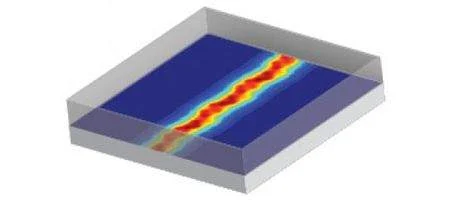Wires just one atom tall and four atoms wide have been shown to have the same current-carrying capability as copper wires, giving a new lease of life to Moore’s Law.

Experiments and atom-by-atom supercomputer models of the wires – the smallest ever developed in silicon – show they maintain a low capacity for resistance despite being more than 20 times thinner than the conventional copper wires in microprocessors.
This, says the Australian team, could have important implications for the development of nanoscale computational devices. Indeed, the theory shows that it should be possible to downsize to a single dense row of phosphorus atoms embedded in silicon.
It also shows that Ohm’s Law, which demonstrates the relationship between electrical current, resistance and voltage, continues to apply all the way down to an atomic-scale wire.
“It’s extraordinary to show that Ohm’s Law, such a basic law, still holds even when constructing a wire from the fundamental building blocks of nature – atoms,” says Bent Weber of the University of New South Wales.
The circuits were built up atom by atom, instead of by the usual method, says Gerhard Klimeck of Purdue University.
“Typically we chip or etch material away, which can be very expensive, difficult and inaccurate. Once you get to 20 atoms wide you have atomic flucuations that make scaling difficult,” he says.
“But this experimental group built devices by placing atomically thin layers of phosphorus in silicon and found that with densely doped phosphorus wires just four atoms wide it acts like a wire that conducts just as well as metal.”
The discovery could be an important step in the development of quantum computers in which single atoms are used for the computation. It’s not just a question of creating transistors from individual atoms – the interconnecting wiring and circuitry also needs to shrink to the atomic scale.
“The metallic wire is in principle quite difficult to be scaled into one- to two-nanometer pitch, but in both experimental and modeling views, the research result is quite remarkable,” says Hoon Ryu, a Purdue graduate now at the Korea Institute of Science and Technology.
“For the first time, this demonstrates the possibility that densely doping wire is a viable alternative for the next-gerenation, ultra-scale metallic interconnect in silicon chips.”






